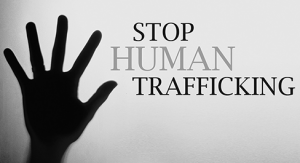Human trafficking: Some 215 Ghanaians trafficked abroad and domestically
 Ghana has legislation covering all forms of human trafficking as indicated in the United Nations Trafficking in Persons Protocol, but until recently, the country didn’t tackle the menace vigorously.
Ghana has legislation covering all forms of human trafficking as indicated in the United Nations Trafficking in Persons Protocol, but until recently, the country didn’t tackle the menace vigorously.
According to information from the Ghana police cited by the United Nations Office on Drugs and Crime (UNODC) in its 2016 Global Report on Trafficking in Persons released December 22, 2016, 132 victims were identified in 2013, 209 in 2014, and 37 up to May 2015, adding that about 215 victims were Ghanaian nationals trafficked domestically and abroad.
About 25 of the victims were citizens of Nigeria, two from Côte d’Ivoire, four from Bangladesh, and four from Sri Lanka, and for about 125 victims, the country of citizenship was unknown, it says.
Human trafficking is considered a new form of slavery and is said to have become the third most profitable venture of organised crime globally. Human trafficking generates about $150 billion annually to traffickers.
The US government in June 2016, cited Ghana for not doing as much as the country should to curb human trafficking, and warned that, that could lead to a downgrade and a loss of hundreds of millions of dollars in US development aid assistance to the country. The country was on a Tier 2 watch list for the second year, indicating that the country has failed to comply with the minimum standard for elimination of trafficking as stated in Section 108 of the Trafficking Victims Protection Act.
Then in July, the country formally announced the Human Trafficking Prohibition (Protection and Reintegration of Trafficked persons) Regulations, 2015, L.I. 2219.
The UN report also noted that eight prosecutions for trafficking in persons were recorded in the country up to May 2015.
“Several cases are pending with the courts,” it adds.
It is estimated that more than 190,000 people are currently victims of human trafficking in the country, and along the Volta Lake alone, there are more than 49,000 children engaged in work. 21,000 of those, are forced into hazardous labour that is very dangerous to their lives.
By Emmanuel K. Dogbevi
Copyright © 2016 by Creative Imaginations Publicity
All rights reserved. This news item or any portion thereof may not be reproduced or used in any manner whatsoever without the express written permission of the publisher except for the use of brief quotations in reviews.
